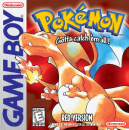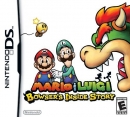I like all of the Pokemon starters. It might be because Game Freak puts extra effort into them or because I fall in love with them during a playthrough, but I have a place in my heart for all the main series starters. That said, they are far from all being equal.
The following list is based off of several factors, including not only their visual design and current gameplay, but also how these Pokemon performed during their respective games where they were starters. This means that Charmander, for example, would be judged based on its performance in Red/Blue/Yellow and to a lesser degree the GBA remakes.
Main Series Only
6. Bulbasaur

Nothing like a bit of controversy to start things off! The Bulbasaur line, ending with Venusaur, is the least popular member of the original trio for good reasons. First, it has the misfortune of being a secondary Poison type. Not only did this give it weaknesses against 5 of the original 15 Types, these types included Psychic, the one type to rule them all. The Bulbasaur family also had trouble taking advantage of its typing, with no Poison moves that dealt direct damage. Not to mention that it had other Grass families to deal with, including the fairly common Oddish and Bellsprout and the Psychic Exeggcute family. Its saving grace was that it was fortunate enough to be the starter in a region where it had the type advantage for the first third of the game. Plus, it was one of the better status ailment users easily available, so that was a bonus.
5. Tepig

Fire/Fighting is a cool idea for a Pokemon typing. It's easy to forget that outside of the starters, it has never been used. So it was great fun using Torchic and the Chimchar line, though similar, was made just different enough to feel fresh. Plus, I could make a team with Infernape and Lucario to pretend I was playing a DBZ game. Still, with Tepig being the third Fire/Fighting starter in a row, it had a lot to prove.
Unfortunately, Tepig never really worked out. In one way, it was too similar to its predecessors, with both a high Attack and Special Attack. Whereas Blaziken had been otherwise balanced and Infernape was fast, Emboar had high HP. HP is great, but it comes at the cost of Speed, something highly valuable for a mixed Physical/Special attacker. Emboar's moves aren't necessarily bad, but are often self-damaging, negating the HP bonus. Not to mention that it learns few actual Fighting moves naturally. And though Emboar looks cool enough, it looks more like a Fire/Dark Pokemon than Fire/Fighting. Houndoom coul use company.
4. Totodile

Nowadays, the Totodile family is perfectly fine. I prefer other Water starters, but its emphasis on Attack and Defense works perfectly well. However, back in Gen 2, Totodile was flawed at best. This family works best as physical brawlers. You have Water Gun early on, but you'll likely end up relying on Physical moves from a number of types. You will definately want a Water move like Aqua Tail or Waterfall, but this line also learns stuff like Bite, Crunch, Ice Fang, Slash, and Superpower by leveling up. It also has other useful moves like Scary Face and Agility to compensate for mediocre Speed and Screech to be extra devastating.
Back in Gen 2, Water was still a Special-only type. This means that Totodile and family had no STAB moves that worked well with its stats. It learned Water Gun early on and then nothing else Water-related until Hydro Pump over 40 levels later. As for other Physical moves, they were in short supply. Bite and Slash were learned naturally, but not Crunch, Ice Fang, or Superpower. Scary Face was available, but not Agility. Or Flail for that matter. And since TM's were single use, this was hard to work around. Especially since Water is not exactly the rarest Type.
3. Snivy

Snivy was was actually a sort of fan favorite before Black/White were released in 2010, if only because of that smirk. But when the time came, Snivy did not pull through. The Snivy line focused on a combination of Speed and Defensive stats, a somewhat uncommon combination in Pokemon. It also had a disadvantage in terms of opponents. Out of the eight gym leaders in Black/White, five would have a clear type advantage over pure Grass types, not counting Elesa's pair of Electric/Flying squirrels. Unfortunately, the Snivy line relies heavily on direct-damage Grass moves, with only Leech Seed serving as a useful ailment inducer. Leaf Blade and Giga Drain are good moves, but their typing and Snivy's lack of any offensive specialty holds them back. And to add insult to injury, it loses its limbs as a Serperior. That may have no effect on gameplay, but is an odd evolution choice.
2. Chikorita

Grass Starters have it rough. Chikorita had a lot of problems back in Johto, and it is really hard to say why in a few words. Ultimately though, I'd say the problem was that the Chikorita family never decided on an identity. It and its evolutions had fairly balanced stats with extra Defense and Special Defense, so it suggested that a defensive strategy would be ideal. But unlike Bulbasaur, Status Ailment Extraordinaire, Chikorita only learns Poison Powder, not Sleep Powder, Stun Spore, or anything similar. It has support moves like Light Screen and Reflect, but its typing and merely good defensive stats still make it vulnerable to lots of enemy moves, including the more common Flying moves in Gen 2. As for offense, its one virtue is getting Razor Leaf early on. Afterwards, it gets Body Slam and eventually Solar Beam, but it lacks the stats to make either very threatening. Topping this off is the opponents you'll face in Johto. Out of the 8 Gyms, the Chikorita family has a disadvantage in all but two of the region's Gym Types. Flying and Bug come first, Ghost Pokemon are still largely also Poison type, and Steel, Ice, and Dragon come at the end. Ugh.
1. Pikachu

I like the Pikachu family. Really. It and Raichu have usually had the Speed and Special Electric moves to be very useful. It was an early treat in Red/Blue for those looking for an Electric type in Viridian Forest, and in X and Y, its combinations of moves like Nuzzle and Electro Ball have made it one of the most useful in-game families. And once it's learned the moves you want, you can immediately use a Thunder Stone for a huge stat boost. It's just a shame that its role as a starter in Yellow was so embarassing.
First of all, the Pikachu given to the player in Yellow does not evolve. It simply refuses to do so. This may be inspired by the anime, but is a major problem after the early parts of the game. In Gen 1, Starters had rough base stat totals around 250, 325, and 425. Pikachu's total was 260. For the sense of scale, the lowest BST in the game was 175 for Caterpie and Weedle while the Legendary Birds were around 490. Raichu's total of 395 would have been great, but that's not an option. So for about 90% of the game, Pikachu will be behind other starters in terms of sheer power. And unlike in latter games, where held items like the Light Ball or Eviolite could make a difference, there is no way to work around this.
Pikachu also lacks the moveset necessary to work well. To Yellow's credit, Pikachu learns a wider variety of moves more quickly than its Red/Blue counterparts. Thunderbolt in particular was added to its natural movepool, and is available at Level 26 so that players don't need to wait until Level 43 to learn Thunder. That said, Pikachu relies solely on Thundershock until Level 11 and lacks any great offensive options before Thunderbolt. That means that Brock, despite being slightly nerfed, is much more difficult than in Red/Blue, especially due to his team's immunity to Electric attacks. Whereas Bulbasaur and Squirtle could easily solo Brock and even Charmander's Ember could take advantage of being a Special move, Pikachu can do little other than Growl and Tail Whip to support allies. Considering how this is one of the few challenges where Pikachu is on par with other party members in terms of power, that's pretty devastating.
You can play with Pikachu for a couple more hours, going through Mt Moon and beating Misty. There are enough weak Flying targets to level up Pikachu enough to deal with Misty's Staryu and/or Starmie. Pikachu may even be useful on the SS Anne, due to the abundance of Water Pokemon on the ship. However, when facing Surge and the cave to Lavender Town, Pikachu will quickly fall behind. You may try using a TM, but will soon realize that other than Swift or Body Slam, few do anything that make up for Pikachu's flaws. Meanwhile, other Electric types quickly become available, which can be taught Thunderbolt using Surge's TM. Electrbuzz never shows up, but Magnemite appears on Route 10 and starts on a roughly Pikachu-level of power. And when these guys level up, they evolve and get big stat boosts. Jolteon is even better, and there's even Power Plant Pokemon like Voltorb and the mighty Zapdos later on.
But by this point, Electric types are already becoming less useful. Thunderbolt will do little against Erika or Giovanni. Sabrina's team, with its mighty Level 50 Kadabra and Alakazam, has high enough Special stats to make other routes better options. Koga's new Bug-based team has plenty of better weaknesses to exploit. Even in the late game, Electric attacks have trouble on Victory Road, and their usefulness against Lorelei's Water Pokemon is countered by their weakness against Bruno's Onix duo, Lance's Dragon types, and the Rival's own Grass, Ground, and Electric party members.
In other words, Pokemon Yellow's starter has very limited growth, few moves to choose from, is not very useful in the beginning of the game, is even less useful later on, and is simply a bad Type for the Kanto region asd of Generation 1.
Blech.























































